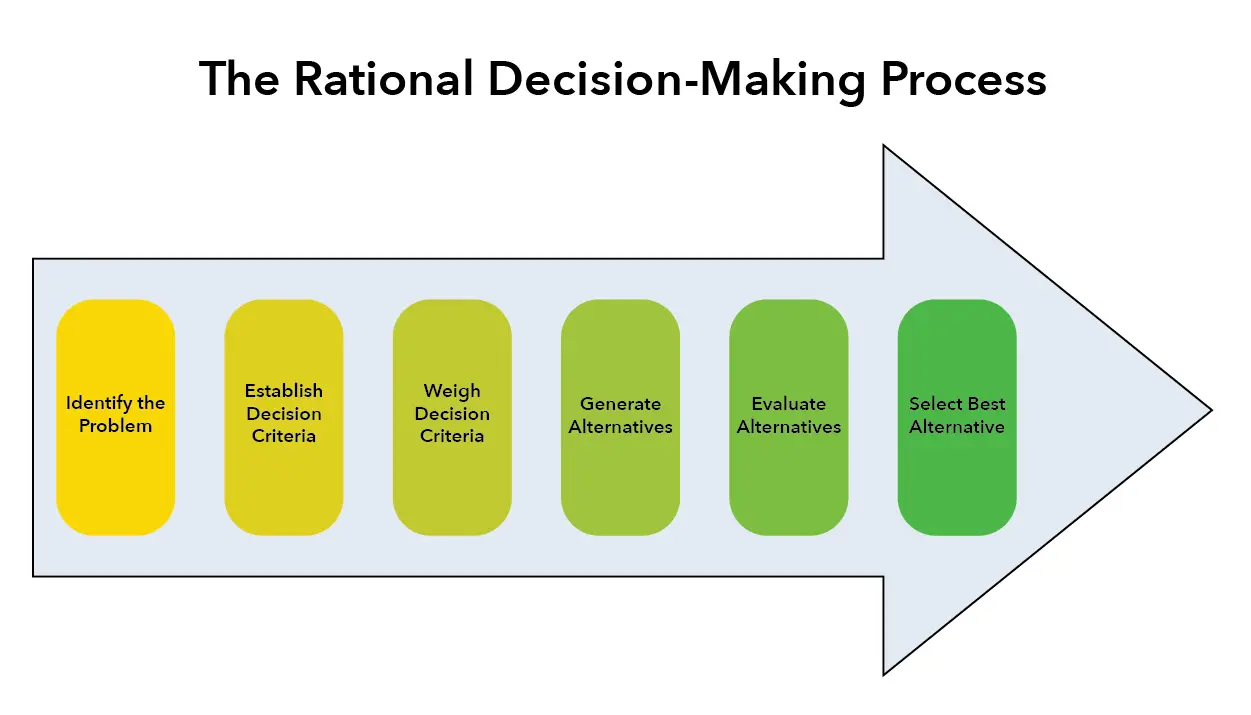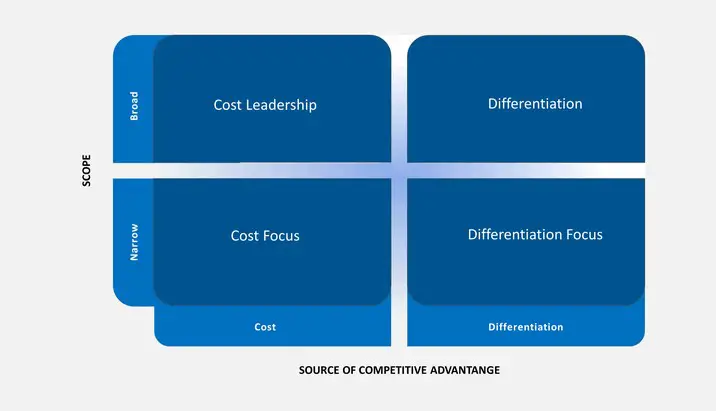6 Steps in The Decision-Making Model | Rational Decision Making Model
What is Decision Making?
Decision-making is the process by which management chose a specific course of action. It is designed to cause things to happen or not to happen. In organizations, managers are expected to make decisions as an essential part of their responsibilities.
Types of decisions
Strategic decisions
These are basically long-term decisions that settle the organization’s relationship with its environment, notably its products or services and its markets. These are the decisions that set up the organization’s goals and objectives as well as its policies.
Strategic decisions are complex, no routine, and non-repetitive.
Operating decisions
These are short-term decisions that settle issues such as output levels, pricing, and inventory levels. They are routine and repetitive by nature. They also tend to receive priority over others because of the sheer weight of their volume plus their ability to show results in the short-term.
Administrative Decisions
These decisions arise from and are subject to the conflicting demands of strategic and operational problems. They are essentially concerned with settling the organization’s structure, e.g., by establishing lines of authority and communication.
A final distinction that can be made between types of decisions concerns the so-called programmed and non-programmed decisions.
Programmed decisions are made in accordance with habit, rule, or procedure. They are used for dealing with complex as well as uncomplicated issues.
Non-programmed decisions deal with unusual or unique problems: those which have not come up often enough to be covered by policy or it is so important that it deserves special treatment e.g.
- Allocation of Resources
- Society Relations
- Falling Product Lines
6 Steps in The Decision-Making Model | Rational Decision Making Model

Decisions may be affected by feelings and interpersonal relationships, and other situational factors, but generally, it is a rational decision process that follows the following steps:
💥🎁 New Year & Easter Deals On Amazon !
Don't miss out on the best discounts and top-rated products available right now!
🛒 Shop Now and Save Big Today!*As an Amazon Associate, I earn from qualifying purchases.
-
Define the situation or problem
Involves an accurate assessment of the problem so that management does not treat mere symptoms.
-
Generate alternative solutions
It involves looking for as many ways of dealing with the problem at hand as possible.
-
Gather data on and evaluate the alternative solutions
After collecting all the pertinent information, the alternatives are evaluated in terms of their cost and benefit. Consider feasibility, consistency, appropriateness, and resultant consequences.
-
Select the best alternative
Pick the alternative that has the highest overall levels of feasibility satisfaction and the fewest undesirable consequences.
-
Implement the alternative
This is the actual action where the alternative selected is put into effect.
-
Evaluate results
Every decision is taken to solve the problem. So once the alternative is put into effect, the manager needs to judge how well he deals with the problem. The results of the decision are checked for their appropriateness.

